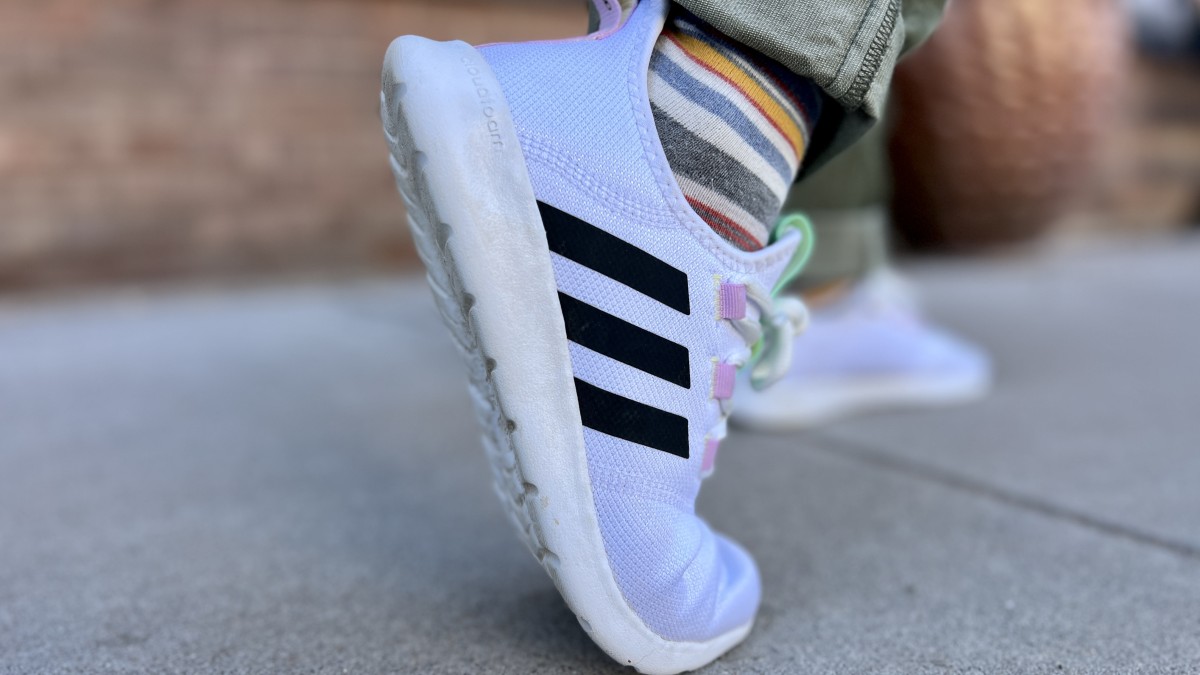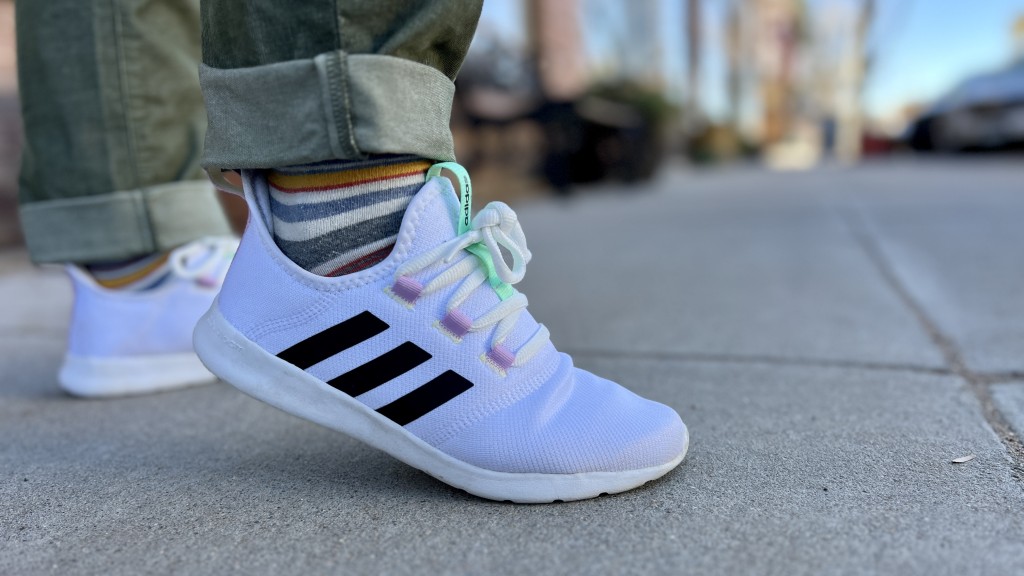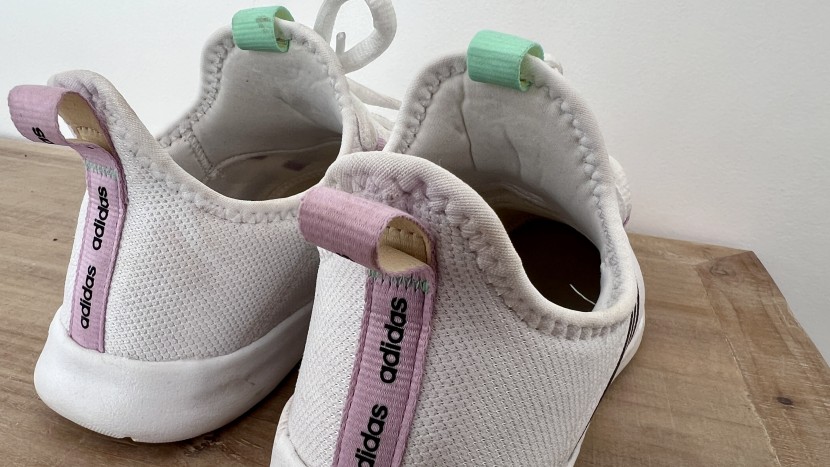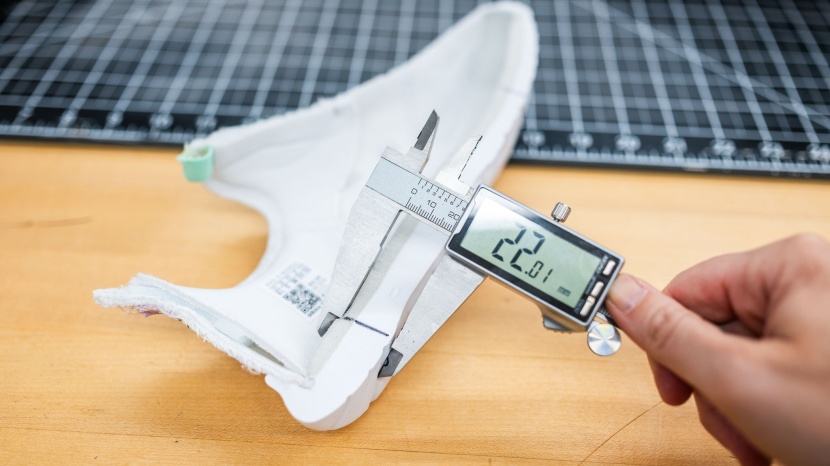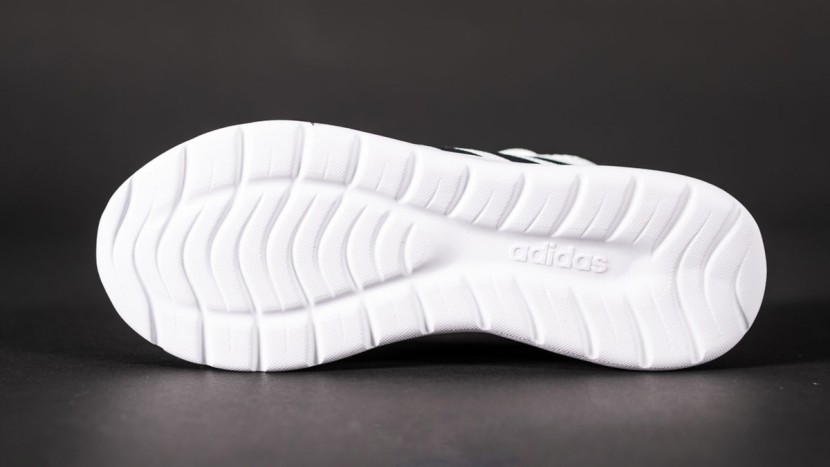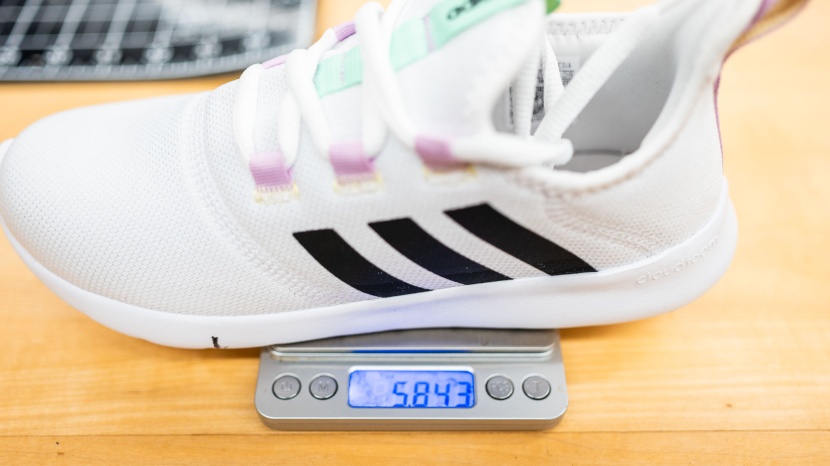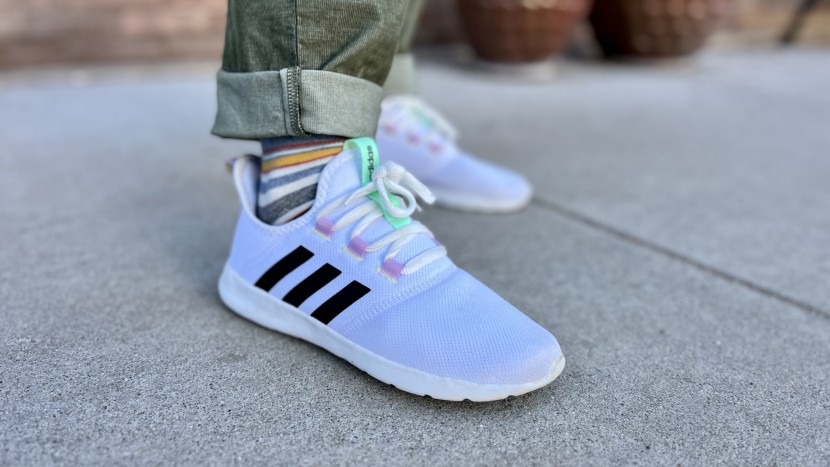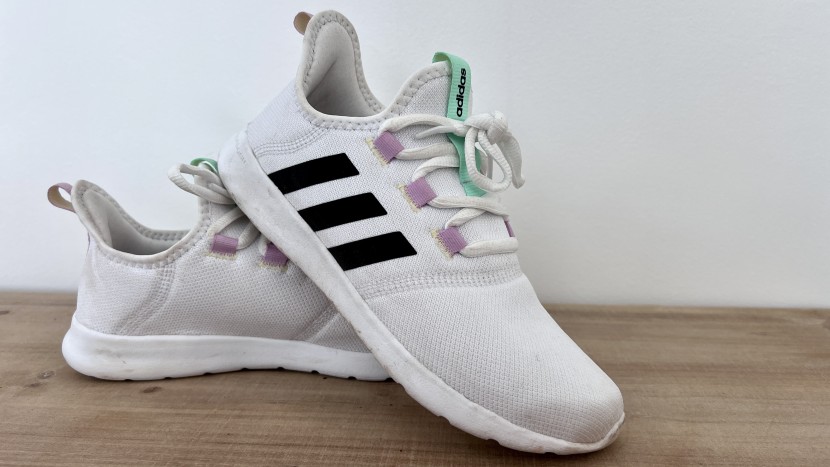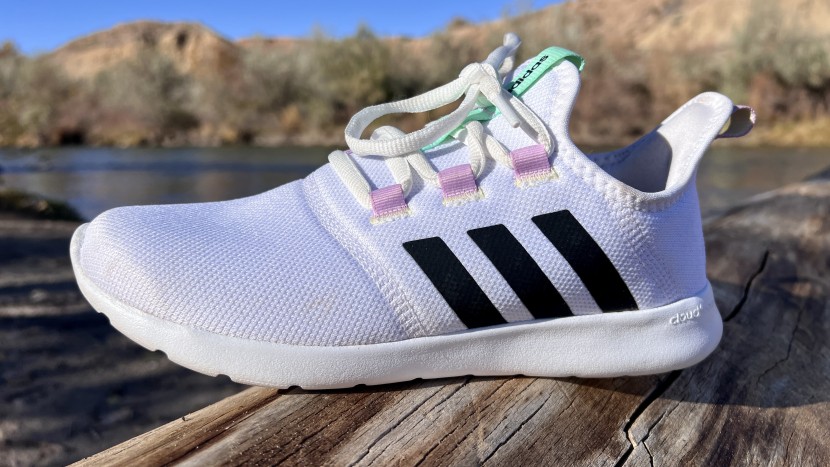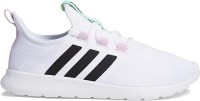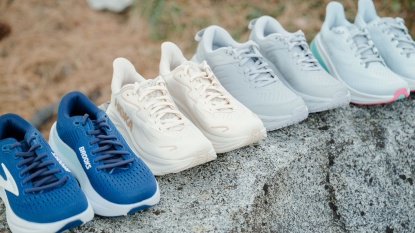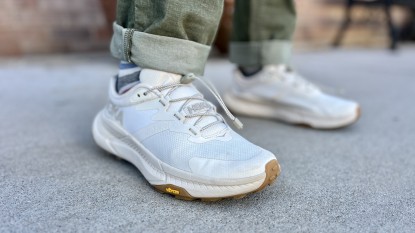
Our Verdict
Our Analysis and Test Results
After extensive testing, these shoes deliver on their promise of lightweight design at an attractive price point, but left us wanting more in terms of essential walking shoe features. The 22-millimeter heel stack height offers minimal protection from the impact of each step, and we noticed an increase in discomfort due to the lack of arch support as our test walks extended beyond a few thousand steps. While the sleek aesthetic and featherweight design work well for quick errands or casual outings, we found them inadequate for serious walking, especially on unforgiving surfaces like concrete or tile.
Comfort
Through my testing, the Cloudfoam Pure 2.0's comfort limitations became apparent during extended wear. The thin sole offers minimal padding, and I could feel the edge where the sole meets the upper pressing against my toes - an unpleasant sensation that persisted throughout testing. During my 10,000-step test walks, I noticed increasing foot fatigue, especially on hard surfaces such as concrete and tile. The ball of my foot experienced some tightness during the first few thousand steps, although this eased with continued wear.
The fit presents some challenges. While our test pair ran true to size, we found numerous user reports indicating sizing inconsistencies, with some needing to size up and others down. The shoe accommodates regular to wide feet well, but the notably tall heel collar pressed against our Achilles, not enough to cause blistering, but persistently noticeable throughout the day.
Getting these shoes on requires more effort than many competitors we tested. The sock-like knit upper, while aesthetically pleasing, doesn't open wide enough for easy foot entry. Unlike the hands-free entry of others in the lineup, you'll need to sit down and use the heel loop to pull these on. This could pose particular challenges for users with limited mobility.
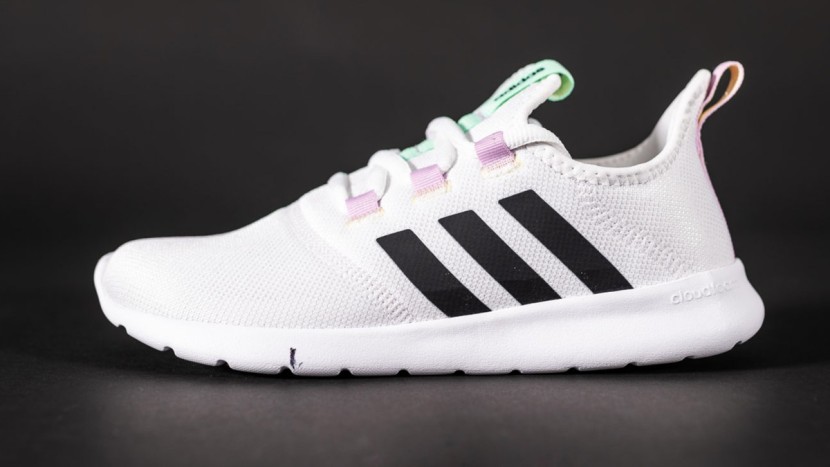
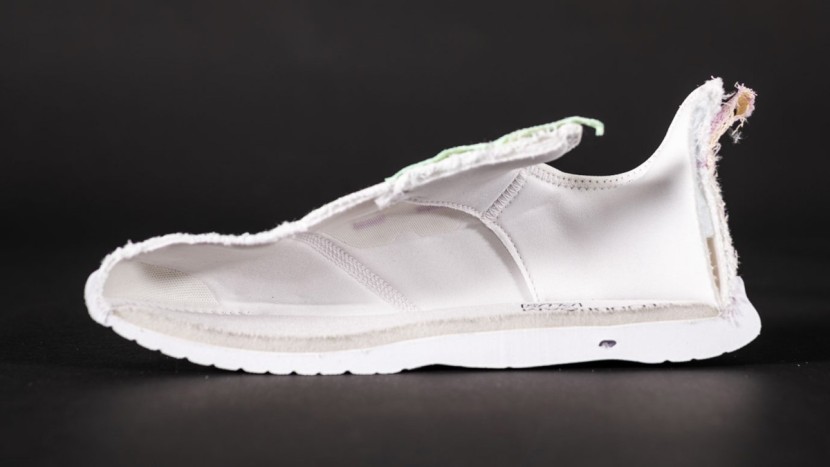
Support
The Cloudfoam Pure 2.0 performed poorly in our support tests. During our standardized rigidity test, we found that we could completely collapse the shoe—a clear indication of insufficient support. While the shoe properly bends at the toe box, its extreme flexibility throughout the midfoot is concerning. The twist test revealed similar issues - the shoe twisted with minimal effort, suggesting inadequate structural support for extended walking.
The lacing system is a notable highlight, providing a secure fit without creating pressure points across the top of the foot. However, the minimal support structure makes these shoes unsuitable for individuals who require stability or pronation control. The low-to-ground design does provide some inherent stability against ankle rolling, but this comes at the cost of cushioning and support. When compared to other shoes in our test group, the Cloudfoam Pure 2.0's support features fall notably short. We'd recommend these only for those who specifically prefer a minimalist feel and have no specific support needs.
Traction
The outsole features a minimal tread pattern that delivers mediocre performance across concrete, tile, and gravel. These shoes achieved acceptable traction scores during our test, but they fell behind most competitors in our group. The simple wave-pattern outsole lacks the aggressive lugs or specialized rubber compounds found in higher-performing shoes. I noticed particular shortcomings on wet surfaces and would hesitate to recommend these for areas with frequent rain or slick conditions.
Weight
At 5.84 ounces per shoe, the Adidas Cloudfoam Pure 2.0 is one of the lightest options in our test lineup; however, we found that this minimal weight comes at the cost of reduced cushioning and support. During our long-distance walking tests on concrete and tile surfaces, the extremely lightweight design was unable to fully compensate for the notably thin sole, resulting in noticeable foot fatigue after extended periods. While the featherlight construction makes these shoes feel almost invisible on your feet during casual wear, our testing revealed that the minimal cushioning and support make these better suited for short walks and everyday activities rather than extended walking sessions where more substantial impact protection is needed.
Durability
Initial quality appears reasonable for the price point, though I have some concerns about long-term durability. After several months of testing, my pairs held up adequately; however, user reports indicate potential issues emerging around the four- to six-month mark. Common problems include deteriorating memory foam cushioning, breakdown of heel support, and premature wear along flex points. The knit upper shows dirt easily and requires frequent cleaning. While machine washable (air dry only), the light-colored versions need regular maintenance to maintain their appearance. I noticed the thin sole starting to show wear patterns relatively early in my testing period.
Should You Buy the Adidas Cloudfoam Pure 2.0?
Consider these shoes if you're seeking a lightweight, budget-friendly option for casual wear and short errands. They work well for those who prefer a minimalist feel and don't require significant arch support or cushioning. However, if you spend long hours on your feet or need supportive features for walking, we'd recommend looking elsewhere.
What Other Walking Shoes Should You Consider?
For better all-day comfort, we recommend the Brooks Ghost Max 2, which offers superior cushioning and support. The Kizik Athens provides easier entry while maintaining good support, and the On Cloud 5 offers a better balance of lightweight design and cushioning. For budget-conscious shoppers seeking more support, the Ryka Devotion Plus 3 provides better value for serious walking.
| Awards | |
|---|---|
| Price | $75 List Check Price at Amazon |
Overall Score  |
|
| Star Rating | |
| Bottom Line | A basic minimalist shoe that prioritizes lightweight design over cushioning and support |
| Pros | Lightweight minimalist design, budget-friendly price point |
| Cons | Minimal arch support, very little underfoot cushioning, shows dirt easily |
| Rating Categories | Adidas Cloudfoam Pur... |
| Comfort (30%) | |
| Support (25%) | |
| Traction (20%) | |
| Weight (15%) | |
| Durability (10%) | |
| Specifications | Adidas Cloudfoam Pur... |
| Width Options | Regular |
| Measured Weight | 5.84 oz |
| Measured Heel-to-Toe Drop | 8 mm |
| Closure Type | Lace |
| Upper Material | Textile |
| Midsole Material | Cloudfoam |
| Outsole Material | Synthetic |
| Heel Tab Type | Finger loop |
| Measured Heel Stack | 22 mm |
| Measured Width | 3.8 in. |


